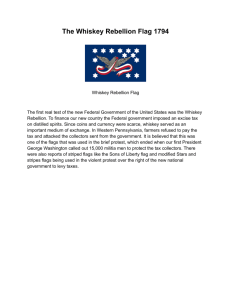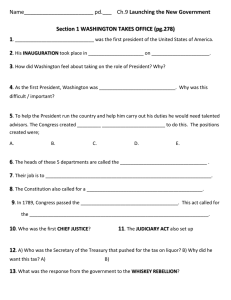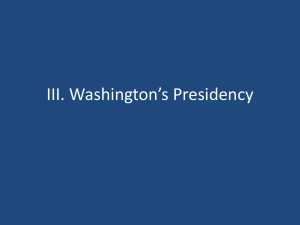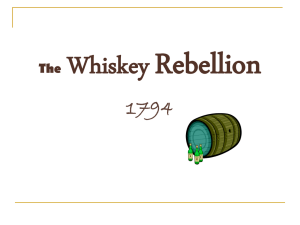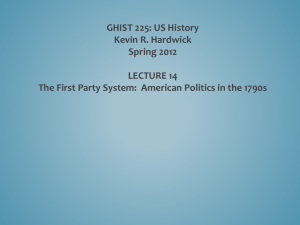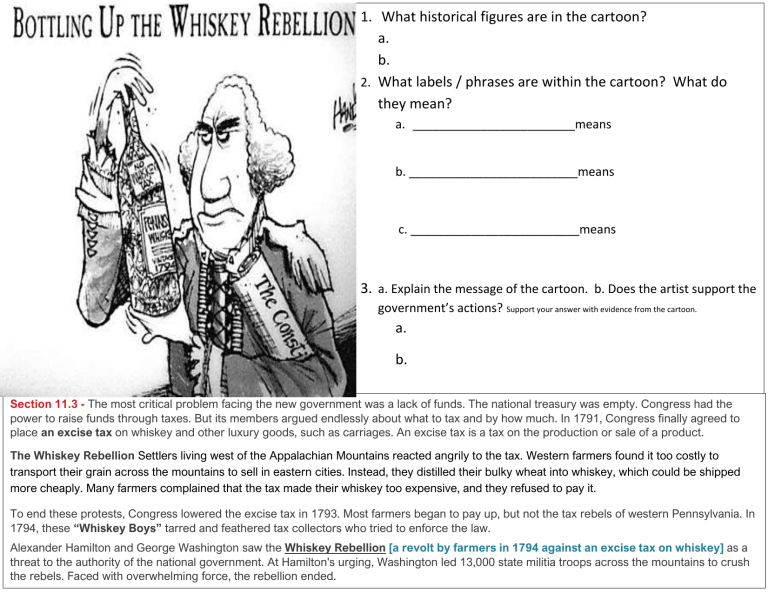
1. What historical figures are in the cartoon? a. b. 2. What labels / phrases are within the cartoon? What do they mean? a. ________________________means b. _________________________means c. _________________________means 3. a. Explain the message of the cartoon. b. Does the artist support the government’s actions? Support your answer with evidence from the cartoon. a. b. Section 11.3 - The most critical problem facing the new government was a lack of funds. The national treasury was empty. Congress had the power to raise funds through taxes. But its members argued endlessly about what to tax and by how much. In 1791, Congress finally agreed to place an excise tax on whiskey and other luxury goods, such as carriages. An excise tax is a tax on the production or sale of a product. The Whiskey Rebellion Settlers living west of the Appalachian Mountains reacted angrily to the tax. Western farmers found it too costly to transport their grain across the mountains to sell in eastern cities. Instead, they distilled their bulky wheat into whiskey, which could be shipped more cheaply. Many farmers complained that the tax made their whiskey too expensive, and they refused to pay it. To end these protests, Congress lowered the excise tax in 1793. Most farmers began to pay up, but not the tax rebels of western Pennsylvania. In 1794, these “Whiskey Boys” tarred and feathered tax collectors who tried to enforce the law. Alexander Hamilton and George Washington saw the Whiskey Rebellion [a revolt by farmers in 1794 against an excise tax on whiskey] as a threat to the authority of the national government. At Hamilton's urging, Washington led 13,000 state militia troops across the mountains to crush the rebels. Faced with overwhelming force, the rebellion ended.
